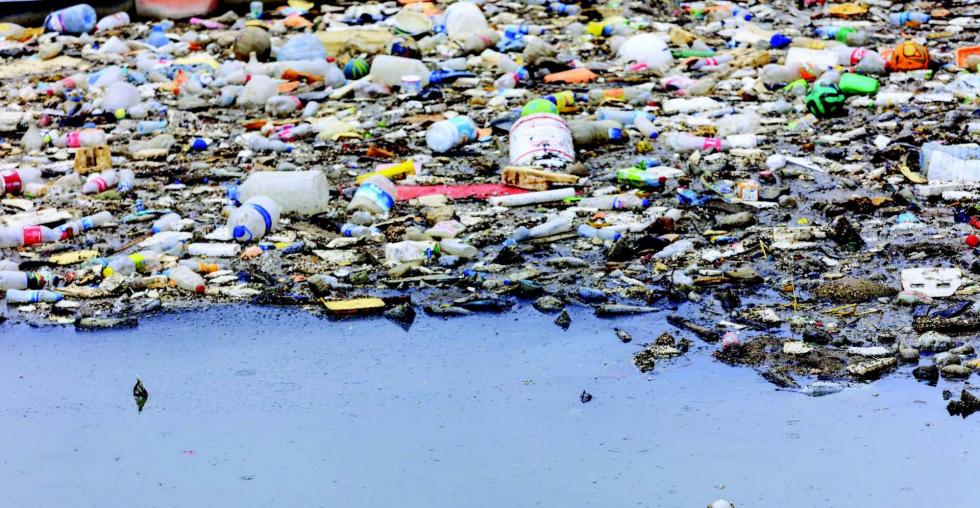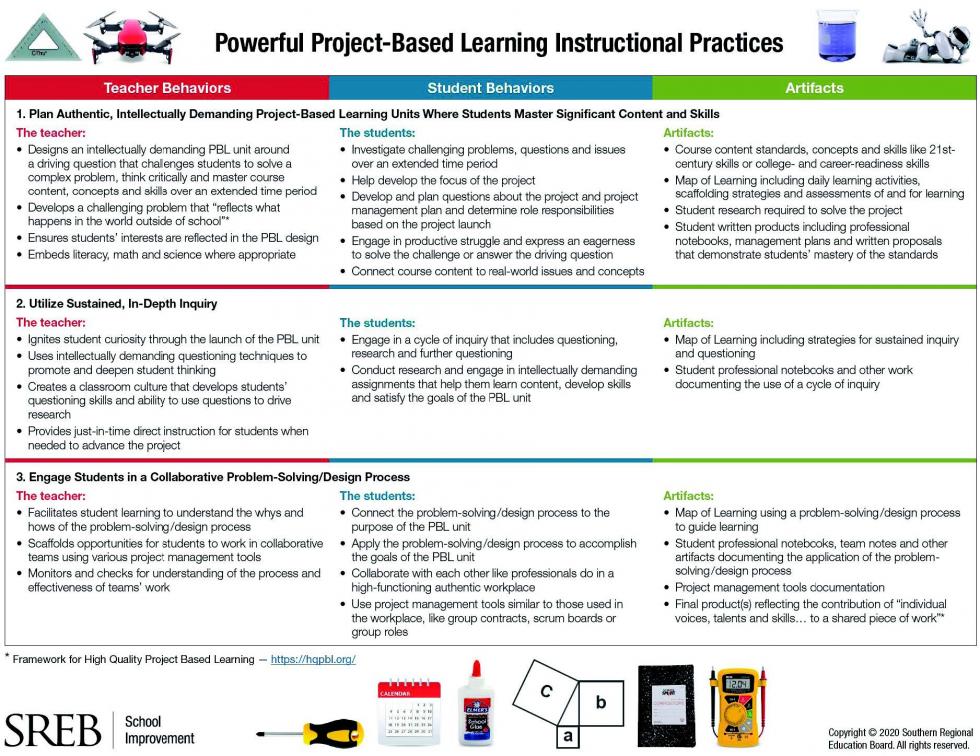Try These Quick Hacks to Power Up Your PBL
(Hint: It’s Easy With National Geographic Resources)
By Leslie Eaves, SREB
There’s no greater feeling than seeing your students come alive and channel their creative energy into bringing their ideas to life. If you center your instruction around project-based learning, you know how this powerful pedagogy transforms classrooms into places of exploration, wonder and excitement.
If you didn’t grow up learning this way, or are just starting your PBL journey, the time it takes to “do PBL” well can seem a little daunting. To make it easier, you can start with an existing PBL unit and hack it to meet your students’ needs, align with standards and fit your pacing calendar.
How-To Hints
Effective PBL units are designed around a driving question that challenges students to solve a real-life problem, think critically and master content, concepts and skills over time. Need a roadmap for organizing instruction this way? SREB’s Powerful Project-Based Learning Instructional Practices will help you recognize the essential teacher and student behaviors and learning artifacts found in classrooms that do PBL well.
Because the National Geographic Society’s exciting units and projects align perfectly with our Powerful PBL Instructional Practices, they offer an excellent starting point for teachers of English language arts, science or social studies — or any content area. For example, Plastics: From Pollution to Solutions, takes middle grades students on a learning adventure in which they explore the destructive effects of plastic pollution on our oceans and ecosystem, then brainstorm solutions for solving this problem. Along the way, students develop a publishable magazine article that addresses the challenges and issues an urgent call to action.
Here’s how this unit incorporates five of our six Powerful PBL Instructional Practices:
-
Authenticity: Plastic pollution is a real
problem faced by real people. Students become science
journalists as they seek to understand the science behind the
effects of plastic pollution, then explain what they’ve learned
to an outside audience.
-
Sustained Inquiry: All of National
Geographic’s lessons employ a
Geo-Inquiry Process that engages students in developing
questions, collecting information and evidence, visually
organizing and displaying what they learn, creating products
that tell stories and sharing those stories beyond the
classroom. In this unit, students follow this process as they
learn about hydrosphere ecosystems and the effects of plastic
pollution on marine life.
-
Collaborative Problem-Solving Process:
Students work together in publishing teams to create their
National Geographic-style magazine articles.
-
Student Ownership: You’ll have National
Geographic’s expert educators right by your side with
pedagogical and content guides packed with ideas for
supporting student ownership of the learning process. For
example, in this unit, you can jigsaw reading and information
gathering so students become responsible not only for their own
learning, but also for sharing and teaching what they learn to
their teammates as well.
- Feedback, Reflection and Revision: A series of magazine design workshops teach student teams how to offer peer feedback. Strategies like a Gallery Walk help students continuously refine their thinking and writing.
Hit the Standards
The first step in any PBL planning process is to be very clear about what students need to know, understand and do by the end of a unit. If you’ve attended one of SREB’s workshops, you know we love to share a simple t-chart that lists state standards on one side and student-friendly learning targets on the other. By breaking down standards into “bite-sized chunks” of learning, you can better visualize the learning progression and consider what learning needs to look like so students master the standard. After doing this, go back to the unit and ask:
- What lesson and activities within the unit can I use to teach
these standards?
- What might I need to change to better fit the standards or my
students’ learning needs?
- What standards are not embedded in the unit? How and
where will I incorporate them?
- What lessons or activities will I need to shorten or skip to better fit my calendar?
Strategize Your Assessments
We all know it: Time is the enemy of classroom teachers. There’s never quite enough time to do everything we want or need to do. With PBL, students need more time to explore ideas, grapple with problems and apply and test what they know. Here’s where a solid assessment strategy can help.
As teachers, we often use tests and quizzes to assess what students know. Although you can still use these traditional tools, PBL offers much more engaging ways to quickly assess students’ knowledge, understanding and skills.
One easy technique is to use an assessment map. I’m linking here to examples of assessment maps we’ve gathered from the teachers we work with to spark your imagination.
Start with the final product: In the Plastics unit, this is the magazine article. From there, you’ll expand on the chunks of learning students will need to create their articles. For each chunk, consider what activities students are doing that could be used to assess that knowledge while also making progress on their PBL.
As you plan your learning activities — both those that are suggested in the unit as well as those you will add — consider:
- What information can I use in each activity to determine how my students are mastering the standards?
- When is the best time to use quizzes or tests in the PBL plan?
- What just-in-time lessons or learning “quick bites” might I need to have ready in case my students aren’t learning what they need to learn?
Connect to Your Community
The icing on the cake in any PBL unit is providing opportunities for students to interact with professionals or community leaders as they learn. While not necessary for every PBL unit, engagement with community partners encourages students to invest more effort and brings authenticity to their projects. Take it from me: It’s amazing to see students, teachers and partners coming together to tackle real issues in their communities.
For the Plastics unit, a teacher might collaborate with local journalists, magazine publishers, marine biologists or environmental scientists or engineers. Consider:
- Are there people in my community who are already working to solve a similar problem?
- What careers or jobs do my students’ parents have?
I’ve seen community partners share their unique knowledge and expertise with students through classroom presentations, visits to their worksites and feedback on in-process or final projects. These partners also make informed, enthusiastic audiences for students’ final presentations.
Putting It All Together
Simply put, project-based learning makes learning meaningful. When challenged with a problem with real relevance to their worlds, students can envision the future, connect the classroom and the real world, and recognize that what they do matters. I hope I’ve inspired you to take the National Geographic Society’s well-planned, standards-based PBL units and use them to spark a lifelong love of learning and exploration for your students.
Contact: Leslie Eaves, leslie.eaves@sreb.org.
This article appeared in the March 2022 issue of SREB School Improvement’s Promising Practices Newsletter.



